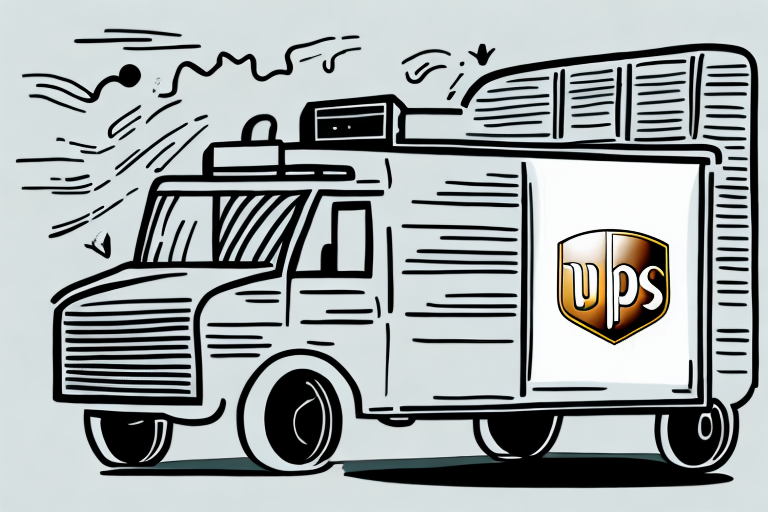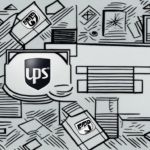Understanding UPS Shipping Rates: How Much Does It Cost to Ship with UPS?
When it comes to shipping packages, one of the most reliable choices is the United Parcel Service (UPS). But how much does it actually cost to ship with UPS? In this comprehensive guide, we will explore all the factors that influence UPS shipping rates and provide you with the insights needed to make informed decisions about your shipping needs.
An Overview of UPS Shipping Services: Which One is Right for You?
Before we delve into the costs of UPS shipping, it's essential to understand the variety of shipping services UPS offers. Whether you're shipping domestically or internationally, have a tight timeline, or are on a budget, there's a UPS service tailored for your needs. Here's a closer look at some of the most popular UPS shipping services:
UPS Ground
UPS Ground is a cost-effective and reliable option for shipping packages within the United States. Delivery times typically range from one to five business days, depending on the distance the package needs to travel. This service is ideal for non-urgent, heavier packages that don't require expedited handling.
UPS 2nd Day Air
If you need your package to arrive within two business days, UPS 2nd Day Air is the optimal choice. This service covers all 50 states and Puerto Rico, making it a reliable option for time-sensitive items that are not excessively heavy.
UPS Next Day Air
For the utmost in speed and reliability, UPS Next Day Air guarantees delivery by 10:30 a.m., 12:00 p.m., or the end of the day, depending on the destination. While this is the most expensive UPS shipping service, it ensures timely delivery and is the best option for critical shipments.
UPS International Shipping
UPS also provides a range of international shipping services to over 220 countries and territories worldwide. These services include UPS Worldwide Express, UPS Worldwide Expedited, and UPS Worldwide Saver. Depending on your needs, you can choose a service that offers guaranteed delivery times or one that is more cost-effective. Additionally, UPS offers customs clearance and brokerage services to help ensure your international shipments arrive smoothly and on time.
Factors That Affect UPS Shipping Rates: What You Need to Know
UPS shipping rates are influenced by a variety of factors, including:
- Package weight and size: Heavier and larger packages cost more to ship due to the additional space and resources required.
- Shipping distance: The further your package needs to travel, the more expensive the shipping cost.
- Shipping service: Faster shipping services typically cost more.
- Additional services: Extras like delivery confirmation, signature requirement, and insurance add to the cost.
- Package contents: Hazardous materials, fragile items, and perishable goods may require special handling, increasing the cost.
- Seasonal demand: Shipping rates may rise during peak seasons, such as holidays, due to high demand.
How to Calculate UPS Shipping Rates: A Step-by-Step Guide
Now that we've covered the factors influencing UPS shipping rates, let's walk through the process of calculating the cost of shipping with UPS:
- Determine your package weight and size: Measure the length, width, and height of your package and weigh it to the nearest pound.
- Choose the shipping service you need: Select a UPS shipping service based on your required delivery time and budget.
- Identify the shipping origin and destination: Input the zip codes for both the shipping origin and destination to determine the shipping zones and corresponding rates.
- Add any additional services: If you need services like delivery confirmation, signature required, or insurance, include these in your calculations.
- Calculate your total shipping cost: Sum up all the costs based on package weight and size, chosen shipping service, shipping origin and destination, and any additional services.
It's important to note that UPS shipping rates can fluctuate based on the time of year and current demand. During peak shipping seasons, such as the holiday season, rates may be higher due to increased demand. Additionally, UPS offers discounts for businesses that ship frequently or in large volumes, so exploring these options can be beneficial for frequent shippers.
Finally, always compare UPS shipping rates with other carriers like FedEx or USPS to ensure you're getting the best deal for your shipping needs. By taking the time to calculate shipping costs and compare rates, you can save money and ensure your packages arrive on time and in good condition.
Comparing UPS Shipping Rates with Other Carriers: Which One Offers the Best Value?
When it comes to shipping packages, UPS is just one of several carrier options. FedEx and the United States Postal Service (USPS) are also popular choices. Here's how UPS shipping rates stack up against other carriers:
FedEx vs. UPS
Both FedEx and UPS offer similar shipping services and rates. Generally, FedEx is slightly more expensive than UPS for comparable services and package sizes. However, FedEx may offer better value for specific shipping needs, such as international shipping or same-day delivery. According to the 2023 Market Share Data, FedEx holds around 35% of the U.S. shipping market compared to UPS's 33%, indicating comparable competitiveness.
USPS vs. UPS
The USPS is often the most cost-effective option for shipping smaller packages that don't require expedited delivery or additional services. In contrast, UPS tends to be more expensive for heavier and larger packages but offers greater reliability and more robust tracking options. A report from the USPS Business Pricing highlights that USPS offers lower rates for packages under 1 lb, making it ideal for small-scale shippers.
Moreover, UPS provides a range of additional services that may be beneficial for certain shipping needs. For example, UPS offers a variety of packaging options, including custom packaging for fragile or oversized items, and insurance options for valuable or irreplaceable items.
Another critical factor to consider when comparing shipping carriers is their environmental impact. UPS has made significant commitments to sustainability, such as using alternative fuel vehicles and implementing energy-efficient practices in their facilities. This may be an essential consideration for businesses or individuals prioritizing eco-friendly shipping options.
Tips for Saving Money on UPS Shipping Costs: From Packaging to Discounts
If you're looking to reduce your shipping costs with UPS, consider implementing the following strategies:
1. Use Appropriate Packaging
Ensure your package is properly packaged and padded to avoid damage and reduce the weight of your shipment. Using lightweight materials without compromising protection can significantly lower shipping costs.
2. Take Advantage of UPS Discounts
UPS offers discounts for specific industries, such as healthcare and education. Additionally, businesses can negotiate volume discounts based on their shipping needs, which can lead to substantial savings over time.
3. Opt for Slower Shipping Services
If your package isn't time-sensitive, choose UPS Ground or other slower shipping services to save money. Slower services often come with significantly lower rates.
4. Use UPS Online Tools
UPS provides a variety of online tools, such as shipping calculators and label printing, which can streamline the shipping process and reduce costs. Utilizing these tools can help you manage shipments more efficiently.
Additionally, consider consolidating your shipments. If you have multiple packages going to the same location, combining them into a single shipment can save on shipping fees. Another effective strategy is to use UPS's "Smart Pickup" service, which allows UPS to automatically schedule pickups for your packages. This eliminates the need for you to call and schedule each pickup, saving time and reducing transportation costs.
Understanding the Different Types of UPS Shipping Fees: Surcharge, Accessorial, and Handling
UPS shipping rates may include additional fees, such as surcharges, accessorial fees, and handling fees:
Surcharge Fees
Surcharge fees are applied to packages that don't meet specific criteria, such as size or weight limits, or those considered hazardous or international. These fees ensure that UPS can offer specialized services for non-standard shipments.
Accessorial Fees
Accessorial fees are charged for additional services beyond basic shipping, such as inside delivery, signature required, or rerouting a package. These services provide added convenience and security for your shipments.
Handling Fees
Handling fees may be applied if your package requires special handling due to its fragility, size, or other factors. Properly addressing these fees can prevent unexpected costs and ensure your package is handled with care.
How Distance and Destination Impact Your UPS Shipping Costs
Shipping distance and destination significantly influence your UPS shipping costs. Here's how these factors come into play:
Shipping Distance and Zones
UPS divides the United States into different shipping zones based on the distance from the shipping origin. The farther your package needs to travel, the higher the shipping cost will be. For example, shipping from New York to California (Zone 8) will cost more than shipping within the same state (Zone 2).
International Shipping
International shipping incurs additional fees and requires customs documentation, which can increase the overall shipping cost. Understanding the duties and taxes associated with international shipping is crucial to avoid unexpected fees. According to World Bank Trade Statistics, international shipping continues to grow, emphasizing the importance of efficient cost management for global shipments.
Exploring International Shipping with UPS: Customs, Duties, and Taxes
Shipping internationally with UPS can expand your reach to a global customer base. However, it's essential to understand the customs requirements, duties, and taxes associated with international shipping:
Customs Documentation
When shipping internationally, you must complete customs documentation that details the contents of your package. Accurate and complete information is vital to prevent delays or seizure of your package. Utilize UPS’s international trade services to ensure compliance with all regulations.
Duties and Taxes
International shipments are subject to import duties and taxes, which vary depending on the destination country and the value of the package. Research these costs beforehand to avoid unexpected fees. The U.S. Customs and Border Protection provides detailed information on import duties and taxes, which can help you estimate the total cost of international shipping.
How to Track Your UPS Package: From Label Creation to Delivery Updates
Once you've shipped your package with UPS, staying informed about its progress is crucial. Here's how to effectively track your UPS package:
Step 1: Track Your Package Online
Use the tracking number provided on your shipping label to monitor your package's status online via the UPS website or mobile app. Real-time tracking offers instant updates on your package's location and estimated delivery time.
Step 2: Sign Up for Email or Text Updates
Enhance your tracking experience by signing up for email or text updates. These notifications will alert you to important package milestones, such as label creation, package pickup, and delivery updates, ensuring you're always informed of your shipment's status.
Step 3: Contact UPS Customer Service
If you have questions or concerns about your package delivery, don't hesitate to contact UPS customer service by phone or through their online chat. UPS representatives can provide detailed information and assistance regarding your shipment.
Common Issues with UPS Shipping Rates and How to Resolve Them
While UPS is a reliable and popular shipping carrier, issues can arise when calculating and paying for shipping rates. Here are some common problems and how to resolve them:
Incorrect Package Weight or Dimensions
Accurately measuring and weighing your package is essential to avoid unexpected fees. If you believe UPS has incorrectly calculated the weight or dimensions of your package, contact UPS customer service to address and resolve the issue promptly.
Unexpected Fees and Charges
If you're surprised by unexpected fees or charges on your UPS shipping bill, review the detailed billing information to understand the cause. Common unexpected fees include surcharges for oversized packages or additional handling fees for fragile items. You can also contact UPS customer service to dispute charges or resolve discrepancies, ensuring transparency and accuracy in your billing.
Overall, UPS shipping rates are determined by a multitude of factors, including package size and weight, shipping distance and service, and additional fees and charges. By understanding these factors and leveraging UPS's online tools and discounts, you can optimize your shipping costs and ensure your packages arrive on time and in excellent condition.
For more detailed information and the latest updates on UPS shipping rates, visit the official UPS website or explore comprehensive resources available at ShipScience.








